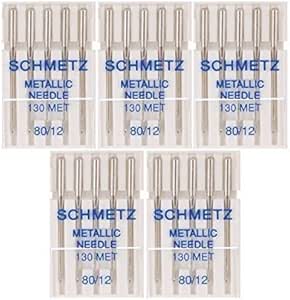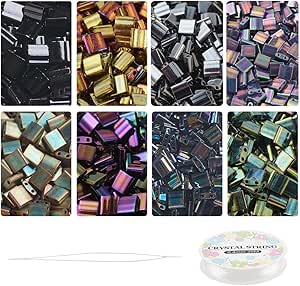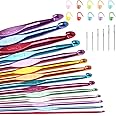In the world of sewing and embroidery, the choice of needle plays a crucial role in the quality and efficiency of the final product. SmartStitch applications, which incorporate advanced technology to enhance sewing processes, rely heavily on the precision and durability of metallic needles. However, these needles require regular maintenance to ensure optimal performance. This article will explore essential maintenance tips for metallic needles used in SmartStitch applications, providing you with valuable insights to enhance your sewing experience.
Understanding Metallic Needles
Metallic needles are specially designed to work with metallic threads, which are often used to create stunning and eye-catching embroidery designs. These needles have a larger eye and a special coating that reduces friction and prevents thread breakage. Understanding their construction and purpose is vital to maintaining their effectiveness.
- Eye Size: Metallic needles typically have a larger eye to accommodate thicker threads.
- Special Coating: Many metallic needles feature a coating that minimizes friction when stitching with metallic threads.
- Point Shape: The point of the needle is designed to penetrate various fabrics without causing damage.
Why Maintenance is Crucial

Neglecting the maintenance of your metallic needles can lead to a range of issues, including:
- Thread Breakage: Poorly maintained needles can snag and break threads, resulting in frustration and wasted materials.
- Poor Stitch Quality: A dull or damaged needle can lead to uneven stitches and compromised design integrity.
- Fabric Damage: An unkempt needle can snag or tear fabric, leading to irreversible damage.
By regularly maintaining your metallic needles, you can avoid these pitfalls and ensure that your SmartStitch applications run smoothly.
Essential Maintenance Tips
1. Regular Cleaning

Keeping your metallic needles clean is the first step in proper maintenance. Dust, lint, and residue can accumulate on needles, affecting their performance. Follow these cleaning tips:
- Use a Soft Cloth: Gently wipe the needle with a soft cloth regularly to remove any debris.
- Alcohol Wipe: For a deeper clean, use a small amount of rubbing alcohol on a cotton swab to clean the needle shaft and eye.
- Check for Residue: After stitching with metallic threads, check for any residue that may have built up due to the metallic coatings.
2. Inspect for Damage
Regularly inspecting your metallic needles for damage is essential to maintaining their performance. Look for the following signs of wear:
- Frayed or Bent Points: A bent needle can create uneven stitches and cause fabric damage.
- Worn Eye: A worn or rough eye can lead to thread breakage.
- Corrosion: Check for any signs of rust or corrosion, especially if needles are stored in humid conditions.
3. Replace When Necessary

Even with proper maintenance, metallic needles have a limited lifespan. It’s essential to know when to replace them:
- Frequent Use: If you use a needle frequently (more than 8 hours of continuous work), consider replacing it after a few projects.
- Poor Stitching Performance: If you notice a decrease in stitch quality, it may be time for a replacement.
- Visible Damage: Any visible damage, such as bending or corrosion, warrants immediate replacement.
4. Proper Storage

How you store your metallic needles can significantly affect their longevity. Here are some effective storage tips:
- Use a Needle Case: Store needles in a dedicated needle case to protect them from dust and physical damage.
- Avoid Humidity: Keep needles in a cool, dry place to prevent corrosion and rust.
- Label Containers: If you have different types of needles, label your storage containers to easily identify them.
5. Use the Right Needle for the Right Project

Using the appropriate needle for your specific project can prevent unnecessary wear and damage. Consider the following:
- Thread Type: Match the needle size and type to the thread you’re using. For instance, if you’re working with very fine metallic thread, use a fine needle.
- Fabric Type: Different fabrics require different needle types. Use a needle designed for the specific fabric to prevent damage.
- Stitch Type: Certain stitches may require specialized needles, such as quilting needles for quilting projects.
Real-World Case Studies

To illustrate the importance of needle maintenance, let’s look at a couple of case studies:
Case Study 1: A Professional Embroidery Business
A professional embroidery business saw a significant drop in stitch quality after months of continuous use of the same metallic needles. After conducting an internal review, they discovered that the needles had not been cleaned or replaced regularly. Once they implemented a strict maintenance routine—cleaning needles after each significant project and replacing them every few weeks—the quality of their work improved drastically, leading to increased customer satisfaction and repeat business.
Case Study 2: A Hobbyist Quilter
A hobbyist quilter faced frequent thread breakage during projects, which frustrated her and extended her sewing time. After researching needle maintenance, she began inspecting her needles regularly and cleaning them after each project. She also invested in a dedicated storage solution to keep her needles organized. Within weeks, she noticed a marked improvement in her stitching efficiency and reduced thread breakage, allowing her to complete projects more quickly.
Maintaining metallic needles in SmartStitch applications is essential for achieving high-quality results and ensuring the longevity of both needles and projects. By incorporating regular cleaning, careful inspection, timely replacement, suitable storage, and using the right needle for your projects, you can enhance your sewing and embroidery experience significantly. Real-world examples illustrate that proper needle maintenance is not just a recommendation; it can be a game-changer in achieving professional results.
Investing time and effort into needle maintenance will save you both time and frustration in the long run, allowing you to focus on your creativity and craftsmanship. Remember, a well-maintained needle is the first step toward sewing success!


